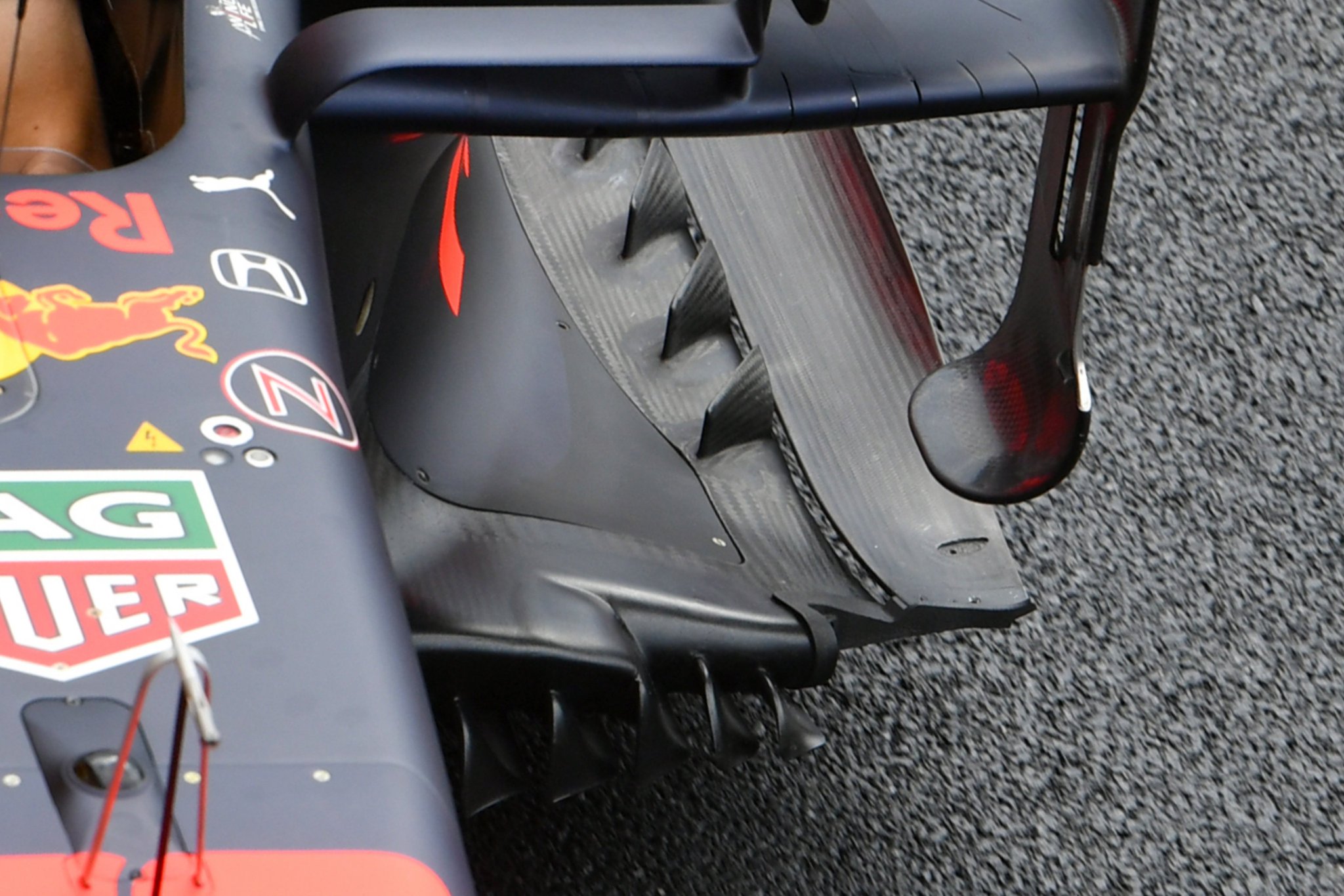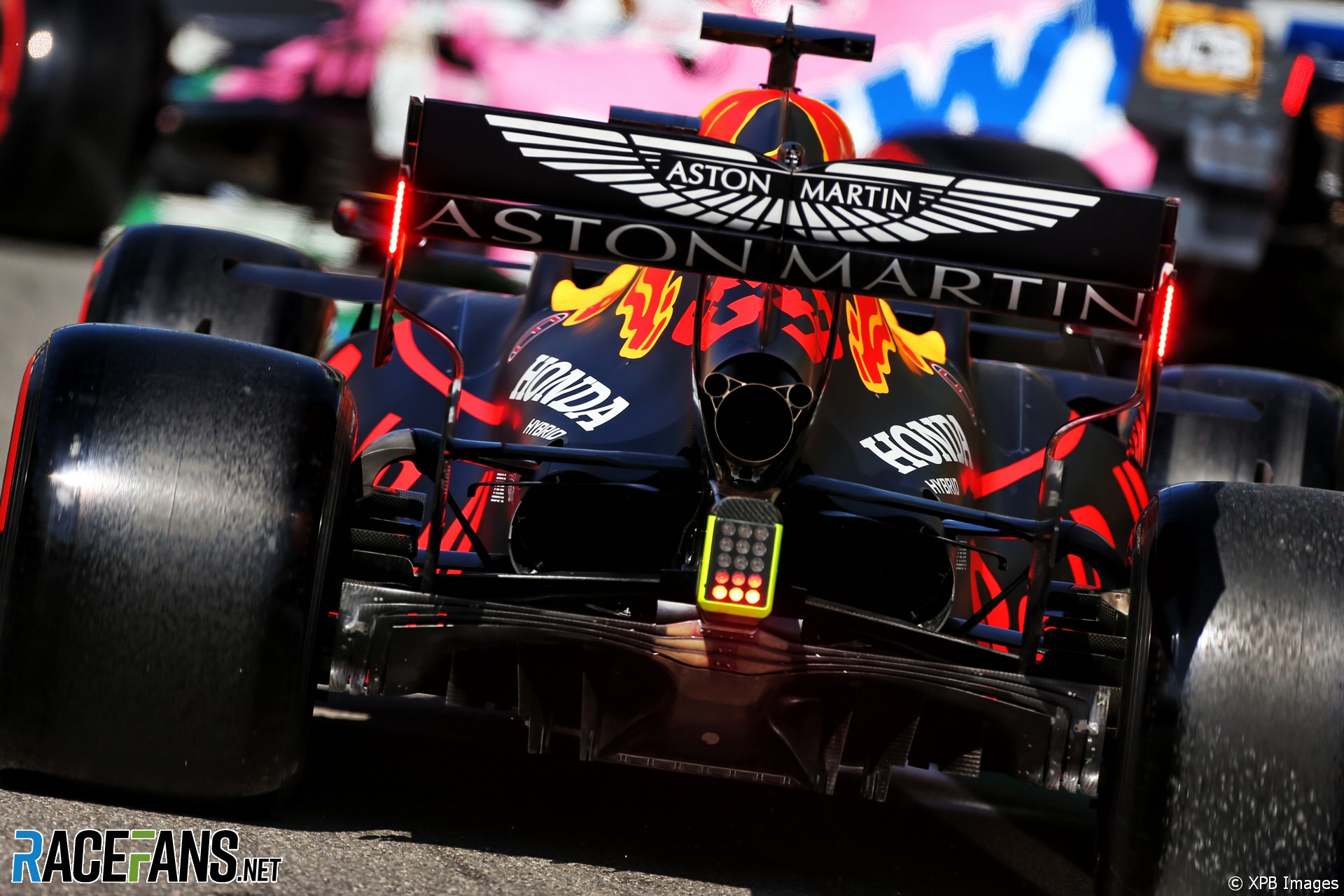zibby43 wrote: ↑14 Sep 2020, 22:14
Another floor comparison.
This was a pretty significant upgrade. Will have definitely helped reduce turbulence from the rear tire area, which can have negative effects on diffuser performance (as the rear tire literally shoots air sideways toward the diffuser as it deforms).
https://cdn-6.motorsport.com/images/mgl ... -com-1.jpg
via @SomersF1
The tire tubulence has a dead zone right where the floor is aiming air at. By pushing airmass to the deadzone, the pressure is increased, and as air likes to go to the area of lowest pressure so it can be full of itself, it'll go to the inside of the tire because the diffuser is low pressure. The tapered front wings do the same thing, aim more air mass at the tire deadzone. The vortex tunnels of the 2014-2018 wings did this very well.
One thing I still don't understand is how brake ducts themselves give an aero advantage, or is Mercedes brake ducts more to control tire temperature? If Mercedes brake ducts are letting them get the tires in exactly the right window it would explain the gaps in qualifying vs race pace. Tires being in and out of the window is easily worth over half a second. Over a race stint tires will reach a temperature equilibrium vs qualifying where you're driving slowly on your out lap to prepare the tire.











